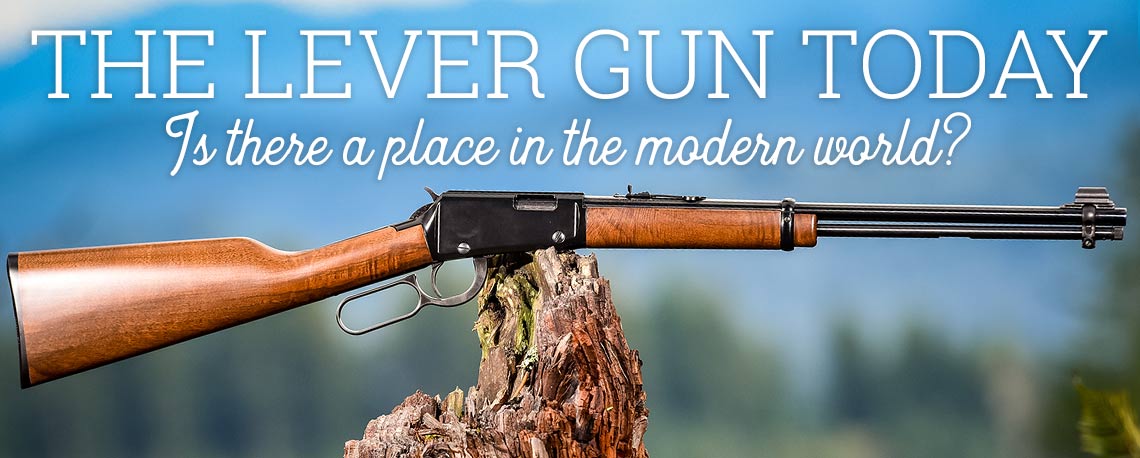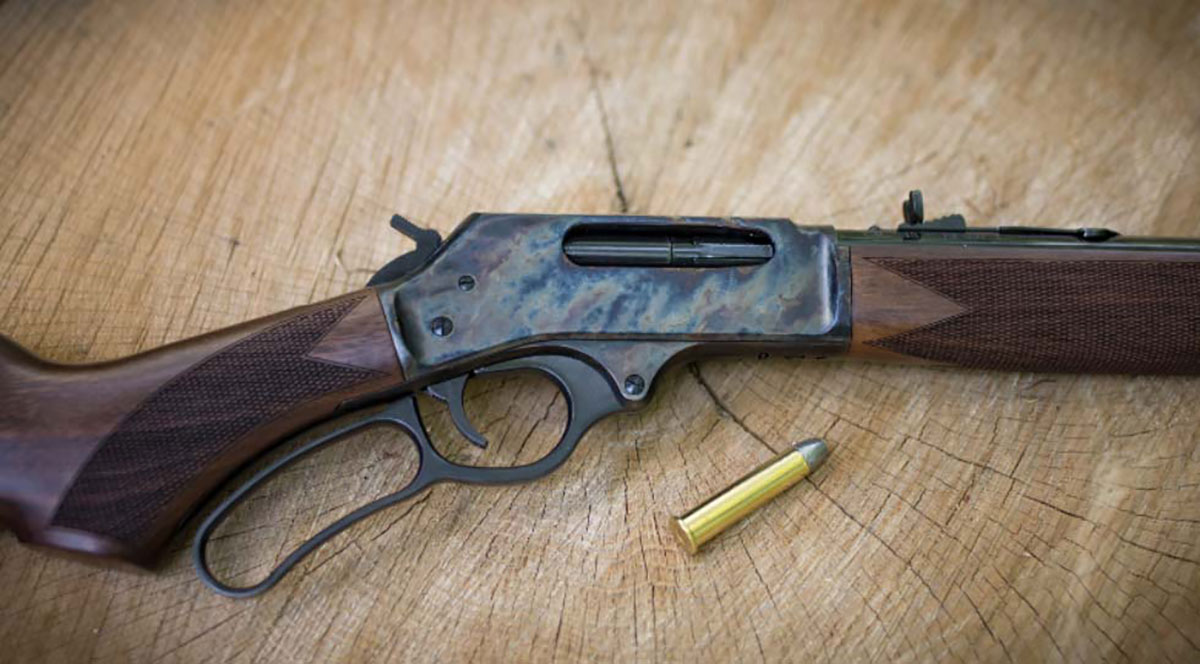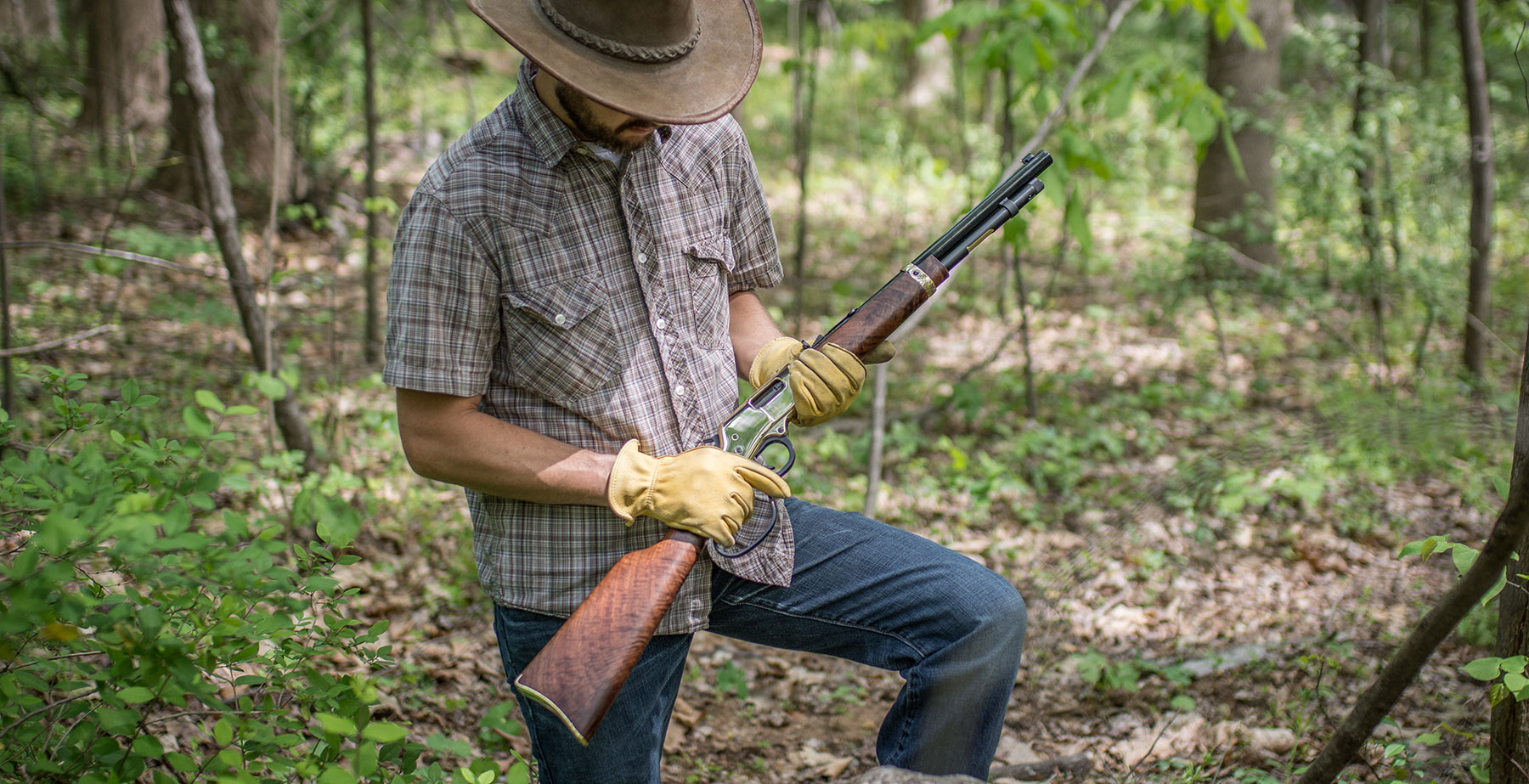The Lever Gun Today – Is There a Place in The Modern World?
 Let’s hit the ground running on this. I posed the question, and I’ll give you the answer: yes, there most distinctly is a place in today’s modern world for the lever-action rifle.
Let’s hit the ground running on this. I posed the question, and I’ll give you the answer: yes, there most distinctly is a place in today’s modern world for the lever-action rifle.
I grew up in a time and place where the levergun was king. It rode in a saddle scabbard, it rode in the pickup, it ruled the deer camp, and in the form of the ubiquitous Winchester Model 92 it also rode the range in the hands of silver screen cowboys, good and bad, for several decades.
The levergun was the Everyman’s Rifle. It had over a century of proven reliability, it did the job if you did yours, ammunition was available at every small-town Mom & Pop store in the state, the action was simple to operate, the rifle (typically a carbine) was trim to carry in hand, on foot, and through the brush, and it was affordable.
All of that, if nothing else, establishes the lever-action’s heritage as America’s rifle. But wait- there’s more.
Besides The Nostalgic Factor
The levergun today is selling in far greater numbers than ever, and there has to be a reason for those numbers. With manufacture going on in such far-flung locales as Brazil, Italy and Japan, not to mention domestic production, there are easily seven brand names immediately recognizable to the average rifle aficionado that are currently building leverguns, and you can’t blame all of that on sheer nostalgia.
For a good part of the last 25 years, the Cowboy Action Shooting sport was probably the main driving force behind the popularity of that class of firearms usually lumped in together loosely as “cowboy guns”. Here, with average membership running to more participants on the plus side of 40 years in age than the minus side, nostalgia very definitely was a factor. But, since CAS has peaked, we can’t lay the entire appeal of the levergun on that demographic.
There’s very simply got to be something more behind the enduring popularity of the levergun than fond memories of growing up either watching Grandpa hunt with his trusty .30-30, or watching old Westerns on the little screen. And it’s really not too hard to figure out what that “something more” is.
These things meet 7 important criteria.

They’re Dependable
First off, anybody in the market for a rifle wants one that works.
There may be several different approaches as far as the guts go, but the lever-actions you see in the racks at your local gunshop are all either based on designs patented well over 100 years ago, or on more modern patterns that have still been around long enough to have proved themselves. Whether you buy a repro of a classic Winchester design, or a more recent levergun model that has totally different insides, odds are greatly in your favor that it’s going to do what you need it to do. The basic operating idea is not complicated, and neither is the actual operation.
They’re Easy To Learn
Tube-loader, side-loader, detachable mag loader, top eject, or side eject, they all boil down to the same simple lever-crankin’ method. Whichever way you load ‘em, you work that lever the same way. Swivel it open to cock or eject, swivel it shut to chamber and fire; and that also holds the same regardless of which way the gun ejects. The side events may vary, but the main event is pretty much a constant from brand to brand and type to type. You learn how to run one levergun quickly and efficiently, and it tends to transfer over to a different make or model quite easily.
They’re A Natural
There’s something about running a lever-action that seems to be more intuitive than a bolt-action, with less monkey-motion for the hand involved. When you cycle one, it’s a fore & aft in-line movement with the strong hand. You start out with that hand in a firing position, you shove it straight forward, you bring it straight to the rear, and you’re right back where you started, in a firing position. With a bolt-action, you remove your hand from the firing position, slip it up onto the side of the rifle, engage the bolt handle, rotate it 90 degrees to unlock, shove it forward, haul it back, rotate the handle down 90 degrees to lock the bolt, and then return your hand down to the firing position again.

They Can Be FAST!
Largely, see above. With fewer directions the strong hand has to move in, a good levergunner can pull off some serious speed, as the CAS crowd has so clearly demonstrated. Yes, a good boltgunner is no slouch, but the two designs differ so much in their mechanical approach that the levergun is just more efficient in terms of fewer motions equaling less shot-to-shot time.
Whether this is important to you or not varies with what you acquire a lever-action to do. For rimfire plinking, it’s a bonus in keeping that soda can bouncing energetically. For centerfire hunting, not so much. For defense against a charging bear, much. I’d infinitely prefer a .45-70 levergun to a .30-06 boltgun in that spot; and I’ve carried one in large-claw country for several years. I have a .30-06, and I can run one, but the levergun involves less of a fumble factor under stress, and more confidence, for me.
Yeah, I know- there are dozens of semi-autos out there if speed’s all you’re looking for, but a good levergun can soldier on through conditions that’d send many of those semi-autos scampering for a clean bath and a warm place in front of the fire.
They Can Be Quite Versatile
Interesting to note, in passing, that you can find a lever-action rifle in over 20 different mainstream calibers, running from the lowly 50-yard .22 Long Rifle bunny-buster on up to the 600-yard .30-06 elk-eliminator. Want a bone-crusher? Take your pick- the “ancient” .45-70 in a long cartridge, or the young upstart .500 Smith & Wesson in a short round. Brush gun for whitetail or muleys? The venerable .30-30’s well-represented. Commonality with a bolt-action? The .308 Winchester’s do-able in a lever-action. Commonality with a pet revolver? You can find a metric bundle of makes & models that can match your favorite hogleg in .32s, .357s, .44s, and .45s, without even breathing hard.
They Can Hold More
This, of course, is model-specific with the levergun, and I’m not talking about competing with a hi-cap 30-round detachable mag-fed semi-auto rifle. But, compared to the bolt-actions in common use, where most of those may be able to fit 5 in their fixed magazine and one in the chamber, most leverguns will accommodate at least 10 in a handgun caliber (and up to 14, depending on model), or 8 rounds of a centerfire rifle caliber.
Again, this may or may not matter to you, but it does to me. I prefer having more rounds available before I have to reload, it’s just that simple and it doesn’t matter if it’s for hunting or defense.
They’re Just Flat Fun
Hand a new shooter a bolt-action rifle, have him or her blow off a few rounds. Hand that person a lever-action, in the same caliber, same deal. My money says that if the caliber’s not heavy enough to eliminate the fun factor entirely and the reach isn’t too long, they’ll tell you they prefer the levergun. This is a virtual guarantee in a rimfire plinker. You get more grins per mile with a lever-action than you will with any other manually-operated rifle design.
And, speaking of new shooters, the levergun makes a great learning tool. The action has to be manually manipulated for each shot, making it easier to keep track of both the shooter’s movements and the gun’s loaded status, and a single glance at the hammer tells everybody instantly whether the rifle’s cocked or not. Can’t say that about either the bolt-action or the semi-auto. The lever-action, in my opinion, is a much superior way to teach a newbie safe handling and shooting practices.
Wrapping It Up
I may possibly be just the slightest bit biased, but overall, the levergun’s my top rifle preference. If you don’t already know why, don’t take my word for it; get your hands on one and you’ll find out what I’m talking about. My favorite recreational rifle happens to be the Henry Repeating Arms Golden Boy that I did a 28,000-round endurance run on, and it’s still going strong. I also haul a .45-70 levergun in the ATV on every outing in the wilds, because I know it’ll come through for me. By the way- circling on back to that nostalgia thing: there’s nothing whatever wrong with basing your buy strictly on tradition, or “’cause Grandpa had one.”
At the risk of being repetitive, the lever-action still very much has a place in modern society, and you don’t have to justify one to anybody.






